2 Brilliant E-commerce Tips That Will Boost Your Mobile App User Engagement if You Implement Them Today
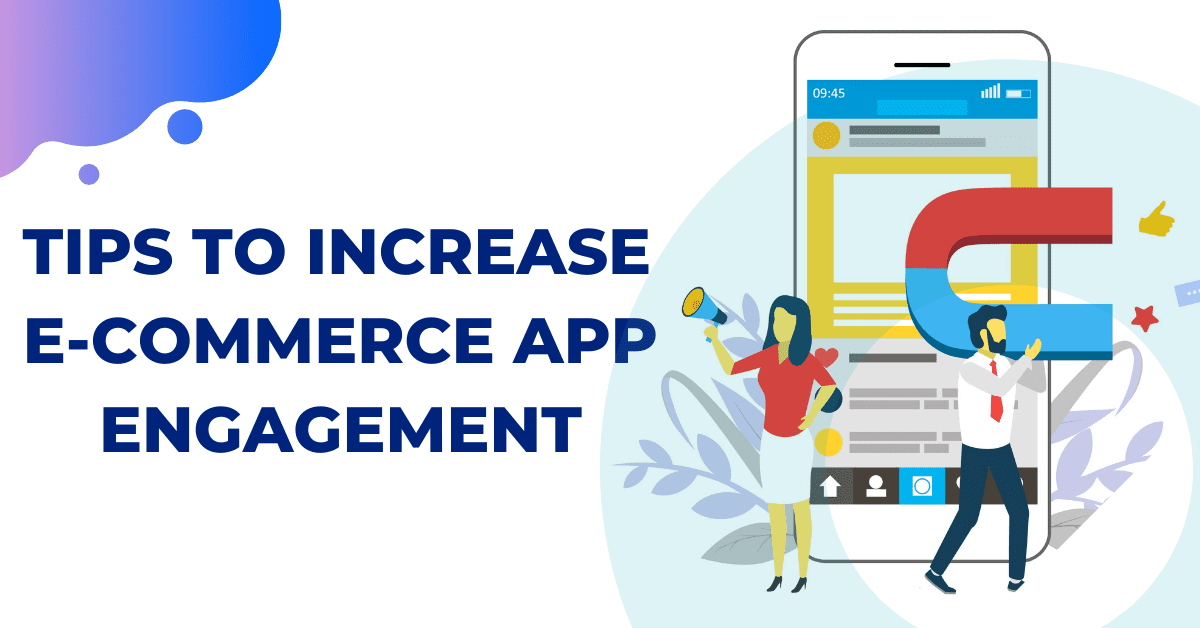
Reading Time: 7 minutes
|
Let’s admit it – the competition in mobile commerce is fierce. According to this report by Google, smartphone users have an average of 4.2 shopping apps installed on their phones – half of which are used weekly! In this chaotic world of mobile commerce, the key to retaining your customers and driving them towards repeat purchases is app engagement.
| Bonus Content
👉 1Weather, Top-rated U.S. Weather App, Scales Mobile User Engagement by 3X [Case Study] 👉 How Airtel Xstream achieved their North Star Metrics for Growth using MoEngage [Case Study] |
Before strategizing app engagement, let’s first revisit the basics. If you wish to skip this section, you can directly navigate to the tips.
Prerequisites
1. What is app Engagement?
Simply put, mobile app engagement is the interaction between your users and your mobile app. Most e-commerce mobile marketers consider a user as engaged when they launch the mobile app and take any action inside the app, usually to indicate a purchase.
Here are a few actions that you can use to define an engaged user:
- Search for a particular product or a category
- Browse a category or view a product listing
- Click on a push notification, SMS or email that opens your app
2. Why is app engagement important?
Our e-commerce retention report shows that the number of app sessions has a direct impact on retention. App engagement helps increase your revenue and the LTV (lifetime value) of a customer. Highly engaged customers purchase often and are more likely to talk about your app to others, enabling word-of-mouth marketing.
Engagement also drives loyalty and retention, resulting in more repeat purchases.
3. How do you measure app engagement?
Customer engagement is an important KPI for product managers, marketers, and dedicated growth teams.
As an e-commerce mobile app marketer, you can measure engagement by observing user behavior. Set up events to track what actions users perform on your mobile apps and how often. When particular events are triggered by a user, they’re considered engaged.
4. So, how do you identify what metric is a reliable indication of engagement?
The answer to this depends on your app’s critical path to success. For example, say you observe that if a user browses at least two product categories in the same session, they are more likely to make a purchase. So, your critical path becomes:
app launch -> category 1 browsed -> category 2 browsed -> item added to cart -> purchase
You can now define an engaged customer as someone who browses at least two categories in the same session.
The goal of engagement is to ultimately drive transactions (purchases) on your app. If you consider the ‘app launch’ event to be an indicator of engagement, your campaigns aren’t going to be very targeted and might result in a low ROI. This is because a user could have a different intent behind launching the app – to track the status of their order or to raise a ticket.
By narrowing down the definition of an engaged user, your campaigns can be more efficient at driving them to your goal – making a purchase.
E-commerce app engagement strategies and tips
App engagement has a direct impact on user retention and revenue, particularly for e-commerce apps.
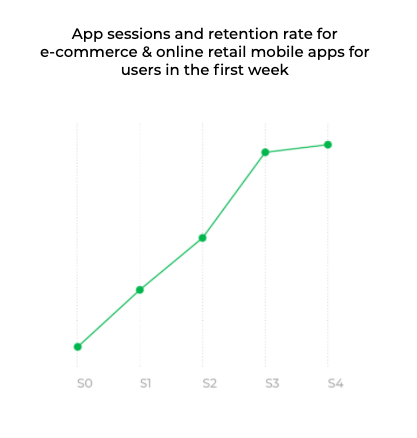
Data shows that as the sessions per user increase, they are more likely to keep using your app for longer. Here are two tips that you can implement to increase user engagement with your e-commerce app.
Before you read further, I’m going to assume that you already have a system in place to track attribution data (user acquisition source), and you’ve created advanced segments based on user behavior. If not, you can refer to this resource here which can help you set this up.
1. Go heavy on content creation
a) OTT video streaming and e-commerce
Walmart-owned Flipkart has revamped its app to get about 200 million Indians to transact on its platform (source). To drive app engagement from a commerce perspective, Flipkart has launched ‘Flipkart Video’ and ‘Flipkart Ideas’. They work with brands and influencers to produce content on several topics including cooking, fitness, health & wellness, fitness, and photography. Similarly, Snapdeal, an e-commerce player in India, has tied with an OTT service to provide videos on its e-commerce app (source).
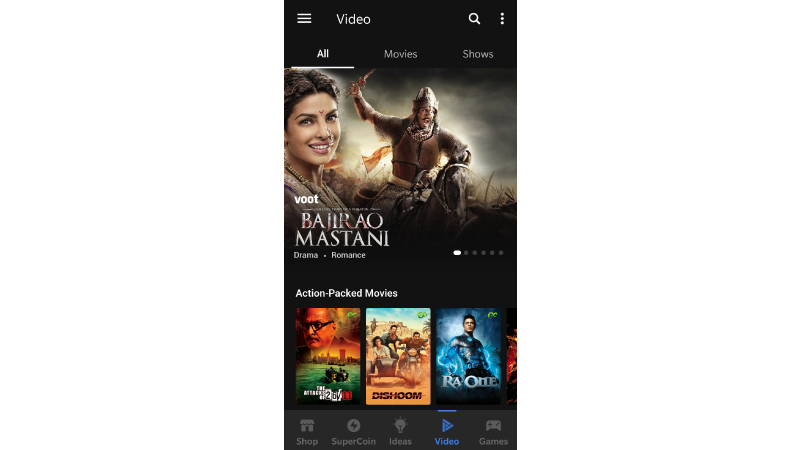
b) Lessons to learn from other industries
A proven way of getting users to open your app regularly is by leveraging the power of bite-sized content – videos, image carousels, interactive quizzes, and infographics. One brand that does this wonderfully is the food-delivery giant, Zomato.
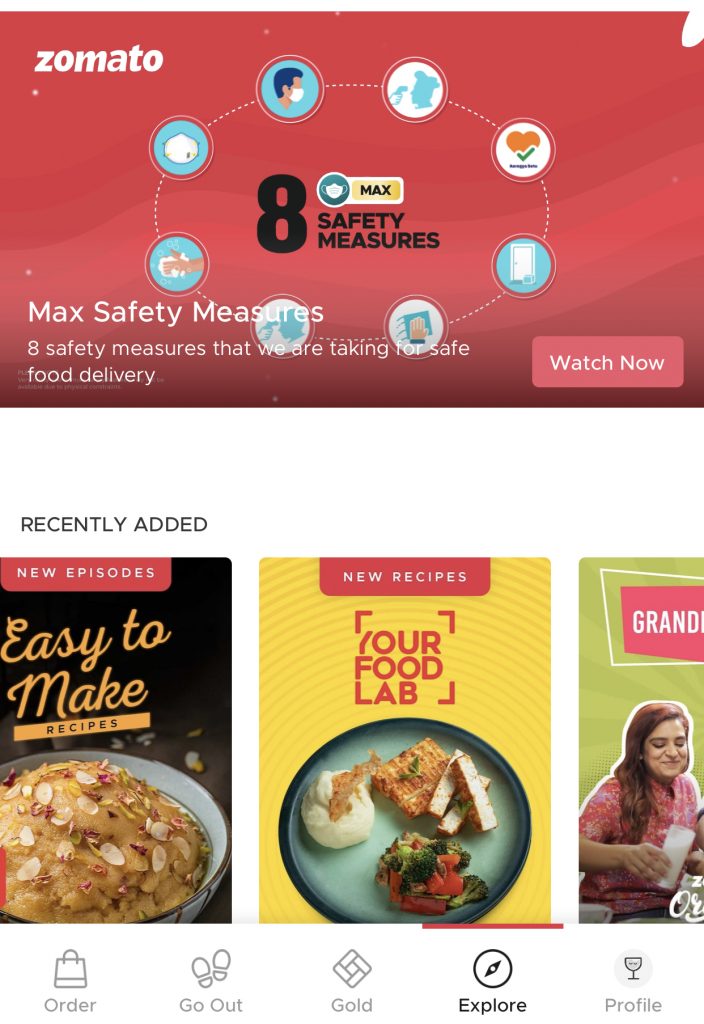
Zomato has launched a series of videos where they include tutorials for easy-to-make recipes, master chefs exploring different places in India and trying the street food, and content around the top cuisines and delicacies from the region you’re in.
Here are a few content ideas for e-commerce apps:
- Seasonal campaigns like, ‘The best Christmas gifts for your loved ones’, ‘Seven gift ideas for Valentine’s Day’
- Educational content like, ‘A look into how glass sculptures are made’
- Interactive content like, ‘Identify the best birthday gift for your loved one by taking this short quiz’
- Fully immersive content by using AR (augmented reality) features of a smartphone
This content will also act as a channel to convert more users, so keep in mind that the content you create for them should be actionable. The interactive quiz mentioned above can be used to identify what type of gifts a user is looking for, and you can leverage this information to show them relevant push notifications, send them relevant emails, or even invest in social advertisements that can bring the user back to your e-commerce app.
Emails are a great way to share this content with those users who have uninstalled your app. Make sure you deeplink your app so that way users are redirected to their respective app stores and are prompted to download your app.
Another great way to engage your users is by making content in vernacular languages. In regions with a diverse consumer base, it is essential to cater to your non-English speakers in their native language. While there are some good online English classes for adults available online, people will still expect you to adjust to customer needs. This can be done by making your content available in regional languages and dialects. Thanks to personalization and vernacular languages, Bukalapak, the e-commerce unicorn in Indonesia, saw an increase of about 2.5X clicks on their push notifications, leading to increased app engagement.
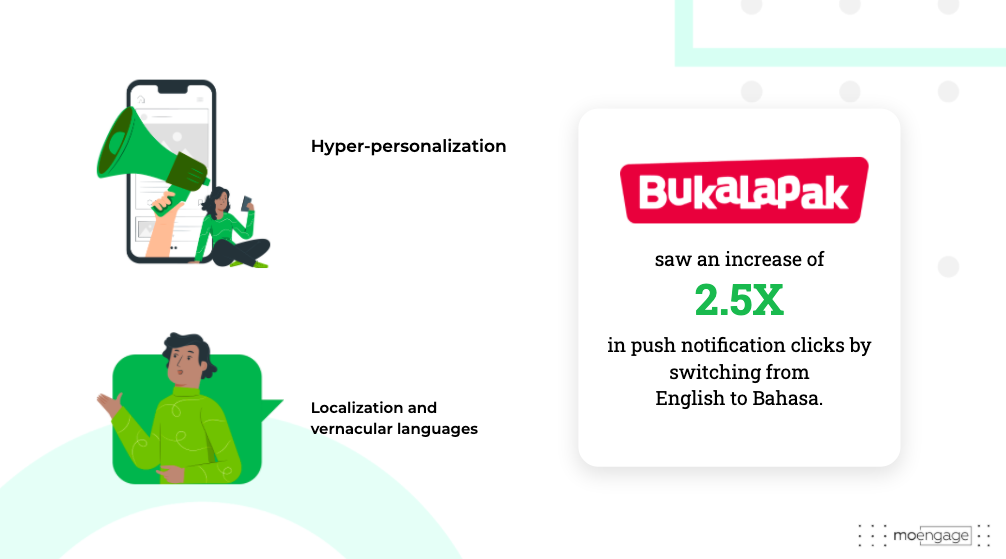
2. Use machine learning
If you aren’t utilizing the power of machine learning, you need to bump it up in your priority list. AI is far more efficient at analyzing data and picking patterns than humans, especially when the data size is in petabytes (that is 1015 bytes of data!).
Machine learning can be used for product recommendations – observe what product a user is searching for, or what product categories they’re browsing, and show them push notifications or send them emails to bring them back to browse either a relevant category or other products in the same category.
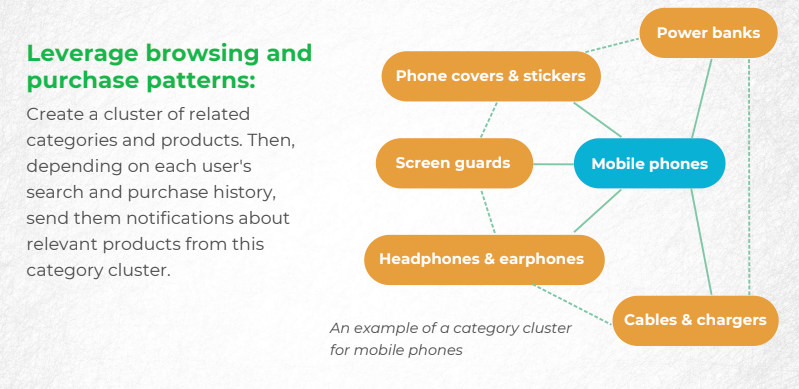
Smart recommendations at BigBasket
India’s largest online grocery store with more than a million customers, built Smart Basket – a system based on ML algorithms to predict a customer’s next purchase based on buying patterns. The system ensures that users are introduced to new products based on recent shifts in their individual buying patterns or on group buying patterns of similar user segments – which ultimately leads to a boost in-app engagement.
You can watch Pooja, the Head of Category Marketing, explain this in detail here:
Machine learning can also be used to predict when different segments of users interact with notifications and are more likely to click on them, open the app, and take the desired action. This information will ensure that you never send push notifications at the wrong time, or you don’t end up spamming your users by sending too many push notifications, SMSes, or emails. A huge part that machine learning plays here is also in the initial segmentation of these users into groups with similar browsing behavior, or properties – or a combination of both.
Another advantage of using machine learning is by using it to figure out the messaging of your communication through multiple channels, especially experimenting with the right CTAs (call-to-action). However, if implemented properly, you can get insights into how different user segments react with different CTA copies, and more importantly – if they open the app and are successfully re-engaged.
Here’s What You Can Do Next
|














